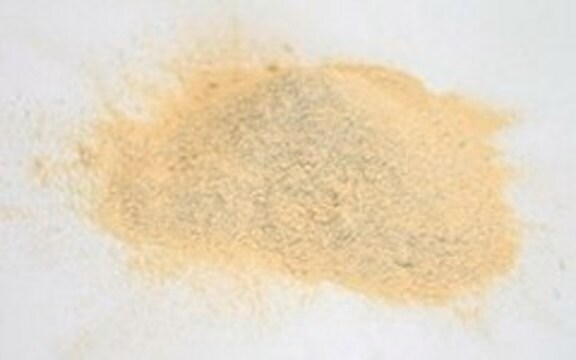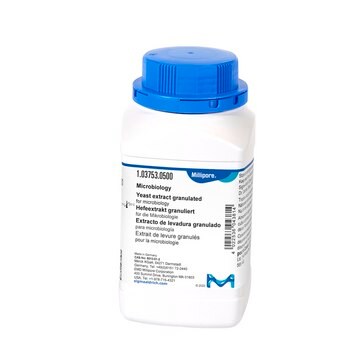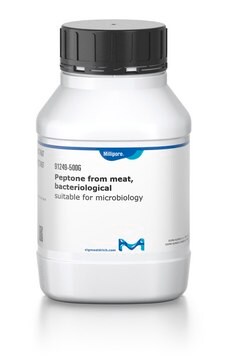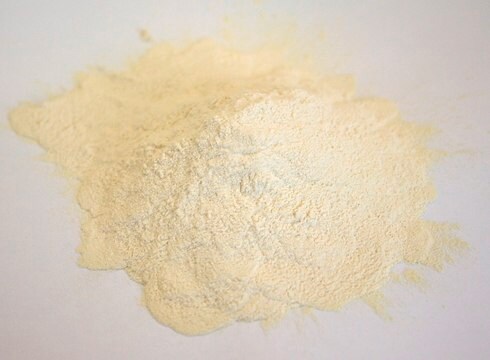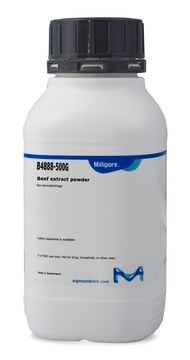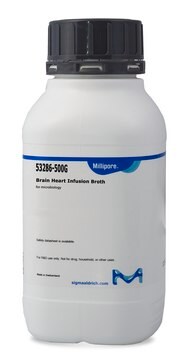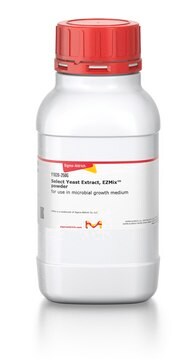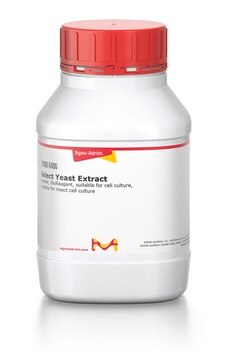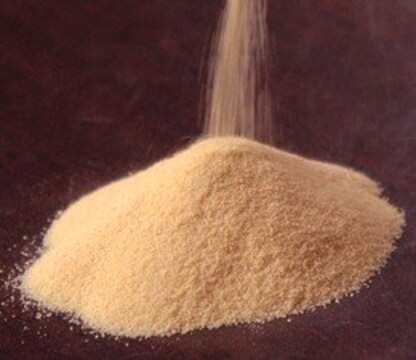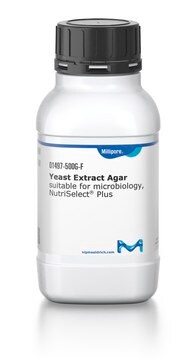70161
Yeast Extract
suitable for microbiology
Synonyme(s) :
YE, Baker’s yeast extract
About This Item
Produits recommandés
Source biologique
Saccharomyces cerevisiae
Niveau de qualité
Stérilité
non-sterile
Forme
powder
Composition
amino-nitrogen, ~5%
total nitrogen (N), ≥11%
Résidus de calcination
≤15%
Perte
≤6% loss on drying
pH
7.0±0.2 (2% in H2O)
Solubilité
H2O: 2%, clear, yellow
Application(s)
environmental
food and beverages
microbiology
Température de stockage
2-25°C
Adéquation
molds
yeasts
Vous recherchez des produits similaires ? Visite Guide de comparaison des produits
Description générale
Application
Code de la classe de stockage
11 - Combustible Solids
Classe de danger pour l'eau (WGK)
WGK 1
Point d'éclair (°F)
Not applicable
Point d'éclair (°C)
Not applicable
Équipement de protection individuelle
Eyeshields, Gloves, type N95 (US)
Faites votre choix parmi les versions les plus récentes :
Déjà en possession de ce produit ?
Retrouvez la documentation relative aux produits que vous avez récemment achetés dans la Bibliothèque de documents.
Les clients ont également consulté
Articles
Culture media provides a habitat with suitable nutrients, energy sources, and certain environmental conditions for the growth of microorganisms. The components of the culture media range from simple sugars to peptones, salts, antibiotics, and complex indicators.
Notre équipe de scientifiques dispose d'une expérience dans tous les secteurs de la recherche, notamment en sciences de la vie, science des matériaux, synthèse chimique, chromatographie, analyse et dans de nombreux autres domaines..
Contacter notre Service technique
